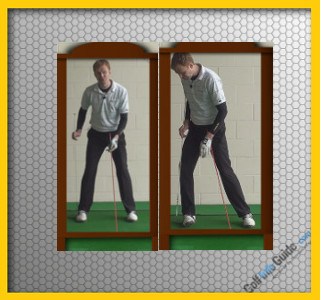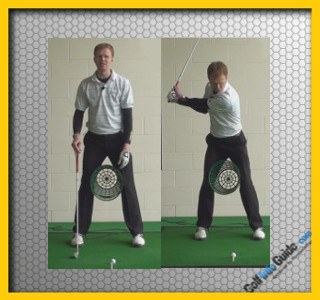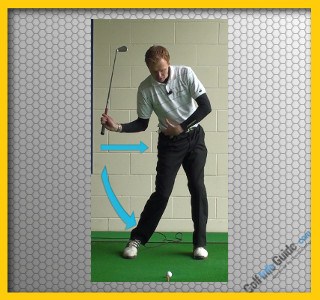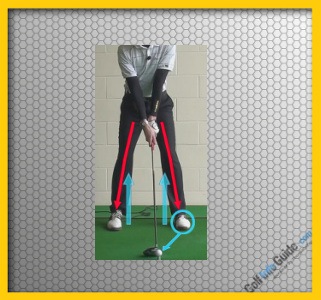The golf swing is built from the ground up. A stable foundation is one of the keys to increased power and consistency. By stable foundation we are referring to the legs and lower body. When our lower body is strong and stable in the golf swing, it helps keep our upper body compact and rotating the way it should. But when our lower body is weak with sways and slides, we see very little separation between the upper and lower halves. This can create early extension of the spine and we develop many flaws in our golf swing. The end result with unstable legs is inconsistency from driver right down to the putter.
An unstable lower body can be the result of many things such as weak core muscles or an injury to our hips and knees. One cure for weak legs is to hit the gym and strengthen the core and large muscles in the legs. However, most golfers don’t have the patience to visit the gym on a regular basis and they want immediate results. The following tips will help create some stability in lower body.

One of the red flags to look for if you have an unstable lower body is to check your knees at address. Using a mirror we can see the relationship between our hips, knees and ankles. In the perfect position you should see each joint stacked on top of one another forming a line. What we see when a golfer has poor lower body mechanics, is the knees are bowed inwards at address. This is a major sign of a weak foundation and we’d likely see a loss of power with many thin or topped shots. To correct this, at the address position push your knees out so they form a straight line between your hips and ankles. The next step is to make sure the space between your knees doesn’t narrow on the backswing. Keeping the knees apart at address and into the backswing will get you on the way to stable legs and consistent golf shots.

Tip #2 Basketball between the legs
If you struggle with Tip #1, a drill to practice is to put a basketball or small beach ball between your legs just above the knees. This will help you feel the proper relationship of a stable lower body. The idea is to make a number of practice swings then progress into full speed swings while hitting balls. After ten shots you can remove the ball and hit some without it. Almost instantly you’ll feel more stable. Some individuals may struggle hitting balls with an item between their legs. If you’re one of these people, just try making some practice swings and really focus on how your lower body feels compared to what it used to.

Nearly all touring professionals and elite amateur golfers have very stable lower bodies and strong legs. They spend hours in the gym working on core strength exercises and stretching. They treat their bodies very well. What most of these elite players share in common is a very distinct separation of the lower body and upper body in the golf swing. Some of this is natural as it’s an athletic reaction to hitting the ball. But others train hard to create the most separation possible between the two halves. The more separation you create, the more speed you create, the further distance you create. To feel separation, there’s a quick exercise that everyone can try to accomplish. First get into your golf posture without a club. Next take your arms and put them across your chest. From here you will try and rotate your chest and shoulders into the backswing as far as you can while keeping your legs and hips perfectly still. The next step is to fire your hips and core with an end result of having your chest finish at the target. If you can perform this exercise as a part of a routine prior to playing, it will get your core warmed up and legs feeling stable before you step on the first tee.

Tip #4 Wider Stance, Flared Feet
Struggling with weak lower body mechanics can be frustrating and in some cases on the days we feel weak all we need to do is widen our stance and flare our feet out a little. This will help to keep our lower body from swaying and sliding while allowing us to rotate better. The wider stance will help with stability while slightly flared feet will help with rotation. Many times golfers will set up with their feet pointing straight out. This restricts the rotation of the hips and will cause a sway or slide. When the feet are flared, it will assist in proper rotation of the hips and this will lead to a wider shoulder turn and more distance.






